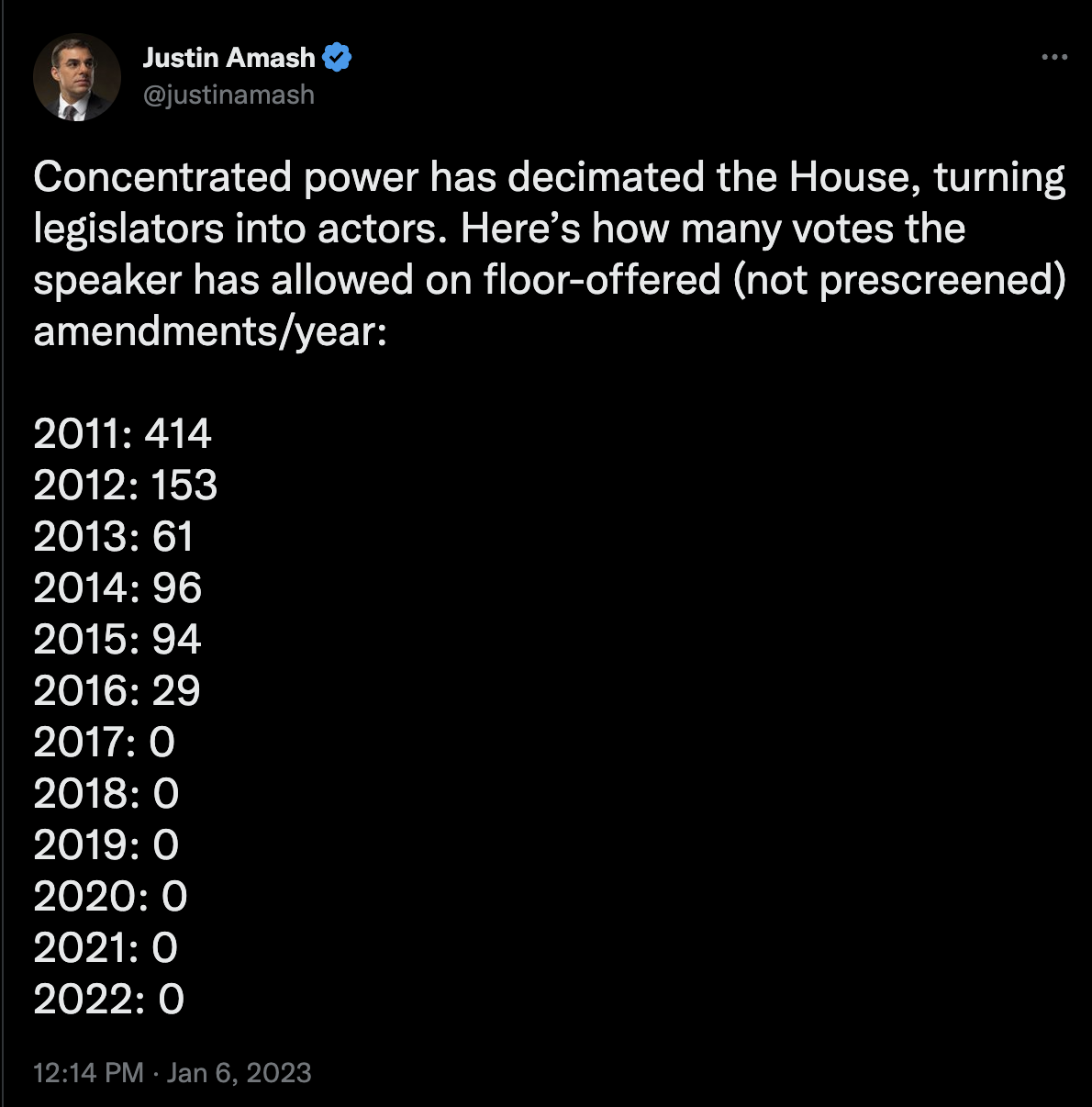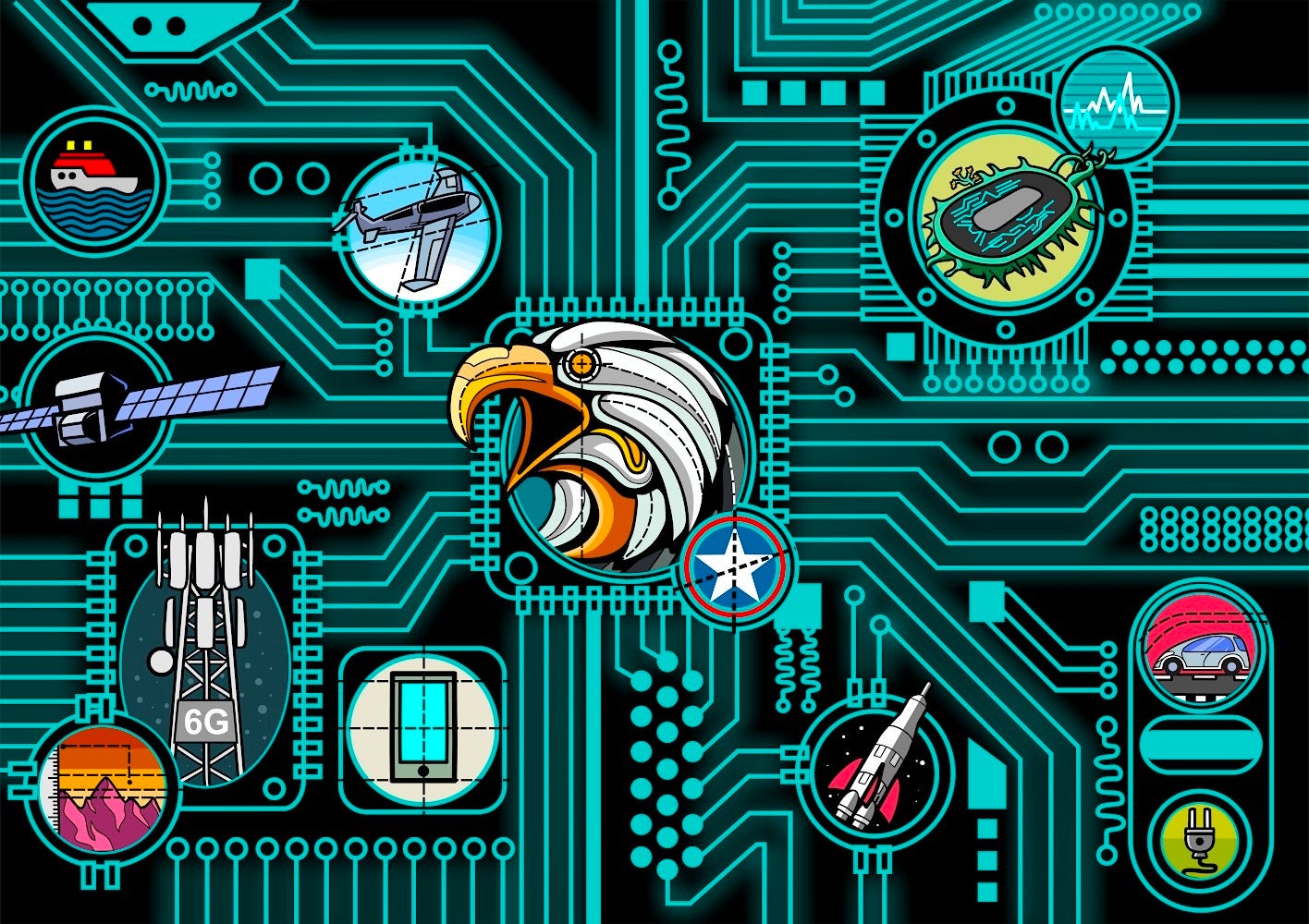
This is a linkpost for https://garysheng.substack.com/p/solutionism
OVERVIEW:
This piece is a follow up to “The Foundational Tech Manifesto,” which paints a high level path for helping the U.S. level up to America 2.0.
In this piece, I make the case for naming a type of person too rarely found in Washington, D.C., “Political Solutionist,” aka someone who wants to use politics and technology as springboards to “level up America” and fix our most fundamental problems through win-win solutions.
This name creates a center of gravity for people who believe that government should support foundational tech innovation and that political innovation is essential to improving government capacity to do so.
A Solutionist, who may affiliate with a political party or none at all, appreciates the value that different American political parties and factions bring to the table, and seeks to be a “synergizer” for the benefit of all—working to implement cost-effective solutions that address the roots of our nation’s greatest challenges.
This piece explains how Solutionists can help America's political factions work together to build toward America 2.0.
Table of Contents
- What the U.S. Could Be
- The Sad States of American Politics
- How American Politics Can Level Up (So America Can Level Up)
- What Solutionist Politics Looks Like In Practice
- How We Get Solutionist Ideas Implemented
- Our Next Steps
What The U.S. Could Be

In my “Foundational Tech Manifesto,” I painted a picture of an America that is more dynamic, resilient, and prosperous than ever before.
An America where optimism about its future is at a near all time high, and kids everywhere feel like any problem is solvable.
Where our government gets shit done—where trust in Congress is close to Kennedy-era levels.
Where our economy is leading the world in developing, implementing, and sharing technologies that are most foundational to a better future for all.
America 2.0.
The Sad State of American Politics
Unfortunately, this is not where we are today.
Depending where you are in the country, you might have scarce access to clean drinking water or suffer from rolling blackouts. Healthcare costs continue to rise. Biodiversity and soil health is declining rapidly. Inflation is hurting families everywhere. China—a proud autocracy eager to grow its influence—is overtaking us in many foundational tech areas that are key to leading the future. The list goes on…
Just about everyone can admit that things can be a lot better.
Especially our shitshow of a political system, which is in what political reform expert Lee Drutman calls a “Two-Party Doom Loop.

It’s dominated by the two major political parties that typically embody a societally destructive approach to politics defined by scarcity mindset; zero-sum thinking; reflexive scapegoating of new technology as the root of societal problems; and a belief that defeating “the other side” matters more than doing what’s right for Americans’ flourishing.
It might be nice to imagine a world where we didn’t need to depend on the broken political system to support the flourishing of the American people; a world where we could just innovate our way out of problems without worrying about what happens in Congress. But we don’t live in that world.
All of our greatest collective challenges require government action to overcome.
And successfully addressing them with the help of government will require a major leveling up of the way our government functions.
America 1.0’s political system is designed to elect hyperpartisan ideologues, primarily because almost everywhere in the country, what candidates make it to the general elections are decided by partisan primaries.
Partisan primaries disenfranchise voters, distort representation, and fuel political division.
As Drutman once said: "America’s winner-take-all electoral rules are the antiquated and cracking levees of a political system that is flooding with toxic conflicts. If we don’t fix these underlying structural issues and channel conflict better, everything else is just taking buckets to a flood."
To make matters worst, if you do get elected to Congress, you are actively blocked by Congressional rules and norms that make it alarmingly difficult to take personal initiative to work across factional lines.
While he managed to secure his speakership on his 15th try last night (Jan 6th, 2023), Kevin McCarthy’s struggles to get appointed Speaker of the House point to a deep frustration voters and elected officials have with the fact that, according to former House Representative Justin Amash, "in Congress, there are basically 3, 4, or 5 people deciding everything right now.”

Zero amendments that weren’t pre-screened by the House Speaker have been allowed for a vote since 2017. And both major parties contributed to this extreme centralization of power: first Paul Ryan, and then Nancy Pelosi.
You can disagree with how anti-McCarthy GOP House members are going about their business, but their actions reflect a broader trend that cuts across party lines: people are tired of how our political system functions.
Overall, a political system that prevents voters from electing independent-minded candidates interested in creating solutions that resonate across party lines and which centralizes power to a small number of partisan-minded leaders cannot solve our greatest problems.
If we don’t get the politics right, it’s near-impossible to get the policies right.
How American Politics Can Level Up (So America Can Level Up)
To produce a political system that consistently generates cost-effective, win-win solutions, the U.S. needs an army of people committed to voting for a kind of person called a “Political Solutionist.”
A Solutionist believes that…
- One of their highest callings is to level up America—and that the best ways to do this is to support foundational tech innovation and support the evolution of government’s ability to unblock and incentivize foundational tech innovation.
- Foundational tech innovation is the key to cost-effective solutions that support human flourishing—not government programs that are hard to maintain and evaluate, and require massive bureaucracies. Cost-effectiveness is a key property of a win-win political situation with minimal downsides, especially as concerns about fiscal responsibility grow.
- Someone’s party affiliation matters less than whether their actions support human flourishing—thus, Solutionists should be able to affiliate with any party (or no party at all) if it helps advance human flourishing—this means there could be Republican, Democratic, and independent Solutionists, as well Solutionists affiliated with a “third” party like the Forward Party.
- At their best, the two major political parties aren’t opposites, but rather complementary forces—that need each other, co-define each other, and can make each other better advocates for solutions that best enable and accelerate human flourishing and American competitiveness; they are two of the most essential ingredients in a Golden Age-brewing stew.
What do Solutionists do?
- They help proliferate foundational tech, primarily through one or more of the following roles…
- an early user or consumer—demonstrating there is demand for the foundational tech
- an entrepreneur—building a foundational tech company
- a team member—of a foundational tech company
- a researcher—producing insights that foundational tech companies can use
- an investor—giving foundational tech companies fuel to build
- a journalist or influencer—covering foundational tech breakthroughs
- an elected official—pursuing political innovation and using government as a tool to unleash foundational tech innovation
- a regulator—unblocking foundational tech development
- an educator—inspiring students to pursue careers in foundational tech
- a voter or organizer—getting Solutionists in office
- The don’t just support technological innovation, but also political innovation—aka the enacting of good regulations, laws, or policies; eliminating bad ones; and instituting non-partisan democracy reforms like ranked choice voting, open primaries, approval voting, and secure internet voting.
- They don’t spend much time on culture war issues—believing that it’s way more important to find solutions to hard problems that can be addressed at scale with technology.
Examples of U.S.-residing public figures who fit this profile include Mark Cuban, Lex Fridman, Katherine Gehl, Andrew Yang, Liv Boeree, Peter Diamandis, Laura Deming, Michael Schellenberger, Ro Khanna, Katherine Boyle, and Chair and Vice Chair of the United States House Select Committee on the Modernization of Congress, Derek Kilmer and William Timmons.
If we’re looking outside the U.S., you have Taiwan’s Audrey Tang and the masterminds behind e-Estonia.
And if we’re looking at history, Benjamin Franklin would be close to the perfect embodiment.
What Solutionist Politics Looks Like In Practice
Solutionists consistently seek to answer: “How can government help unleash foundational tech innovation that helps level up America and enables political win-wins that may not have been possible before?”
To ground this a bit, let’s dive into how Solutionists might propose and get buy-in for policy solutions related to our energy, food, and ecology crises.
Solutionists would seek to build political consensus by finding “win-win-win” solutions that integrate the values of all three major American political faction: progressives, classical liberals, and conservatives. The idea is to put forth policies that provides a victory for each major faction, a practice promoted by the Institute of Cultural Evolution.
Significantly increasing government investment in addressing these interrelated crises would require a strong political commitment from the American public, and integrating the values of the leading factions can help build this commitment.
A win-win-win policy approach that could garner meaningful support across America’s political spectrum is one that seeks to:
- protect and accelerate human and ecological flourishing by developing and deploying technologies that solve human problems without causing serious environmental impacts
- decouple the U.S. from geopolitical rivals as it transitions to a sustainable, even regenerative, economy
- levels up America into the global leader in environmentally beneficial foundational technologies—with the rest of the world increasingly defaulting to American-made (or designed) climate, agriculture, and energy tech, not Chinese alternatives
Why progressives might support such an approach:
- Political will to combat their top issue, climate change, would be significantly increased, and the U.S. would demonstrate more effective international leadership on the amelioration of global warming.
- Foundational tech innovation can enable the re-wilding and re-greening the Earth—even as developing countries achieve modern living standards, and material poverty ends.
Why classical liberals might support such an approach:
- The approach would bolster the narrative that capitalism must be protected in America.
- Increased government funding of technologies and industrial capabilities to address our energy, food, and ecology crises would create a significant market for investment and wealth creation.
Why conservatives might support such an approach:
- Winning the techno-economic competition with China would bolster healthy civic pride.
- Becoming a Republican would be more acceptable to young people, whose top issue is climate change.
Win-win-win solutions to our national crises are possible. But they require tech-forward leaders who understand and seek to accommodate the values and concerns of factions that normally seem at odds with one another.
Solutionists are those leaders.
How We Get Solutionist Ideas Implemented
How do we make Solutionists politically influential?
I’m not in favor of starting a new political party just to advance Solutionist ideas.
While the idea of independent and third party Solutionists in Congress is exciting, it’s extremely difficult for someone not running on a major party platform to win federal elected office. And it’s unclear if that will change anytime soon, even with the rapidly growing demand for political reform that inspired the creation of the Forward Party.
Thus, Solutionists should embrace a pragmatic strategy that primarily focuses on gaining influence within the two major parties, so their ideas have the greatest chances of being enacted into law.
So how can Solutionists gain influence within the two major parties?
Solutionist candidates need to win federal elections.
And to make this happen, we need to create and fund political action groups that directly represent the Solutionist worldview and approach to politics—as well as support and partner with adjacent groups, like organizations driving the non-partisan democracy reform movement and groups advocating for and investing in American tech leadership like the Special Competitive Studies Project and America’s Frontier Fund.
Solutionist political action groups will be most effective if they embody the Solutionist spirit of participatory governance, where members (donors) get to collaborate and vote on what ideas and candidates the groups support.
What candidates do these groups support? The members should be able to have a lot of say. And candidates of all political parties should be considered, as long as they make it their mandate to enact Solutionist policies.
What ideas do these groups support? Members should be able to deliberate and decide democratically—modeling how Congress should function.
By getting Solutionists elected at the federal level, the Solutionist movement could implement a “fulcrum strategy” that gives them enough power to help set the national agenda.
According to people who believe in the fulcrum strategy, during this time when the Democrat and Republican Parties consistently occupy a roughly equal number of elected seats in Congress, a political faction only needs a few Congressional representatives in Washington who don’t religiously toe a major party line in their legislative votes to have a hugely disproportionate amount of leverage to set or block a legislative agenda.
Look at how much power independent-minded Senators Joe Manchin and Kyrsten Sinema had to shape policy over the past two years. For every big spending bill Biden passed, Biden had to court one or both of them to get anything done.
It’s never been a better time to be independent-minded, if you seek political power. The question is, what do you do with that power?
Solutionist elected officials will use their power to pass policies and make reforms that help level up the country to America 2.0.
Our Next Steps
Imagine a future where Solutionists are represented by dozens of Congresspeople, who may caucus with a party, but are deeply committed to using their power to collaborate across factional lines to level up our political systems, so that our government can better support foundational tech innovation that addresses America’s greatest challenges at their roots.
I am personally committed to helping make that happen during this decisive decade, one way or another. And will explore what the path forward might look like in future posts on this Substack.
If this piece resonated, give this an upvote so the forum recommends this post to more people like you. And share this with friends who might also be excited about the future that Solutionism can bring.
Finally, please share any other thoughts, questions, and challenges you have in the comments. And feel free to reach out to me via Twitter DMs.
Thanks for your support.
Let’s grow the foundational tech ecosystem and turn America 2.0 into a reality.

